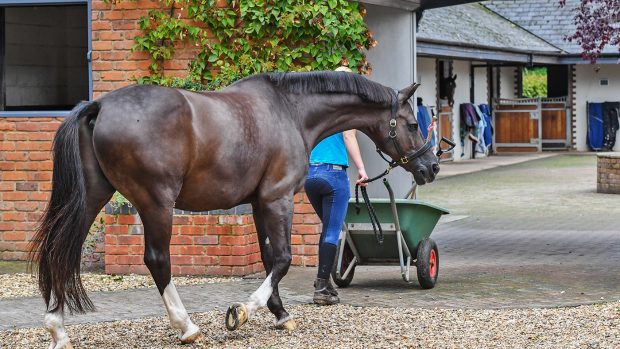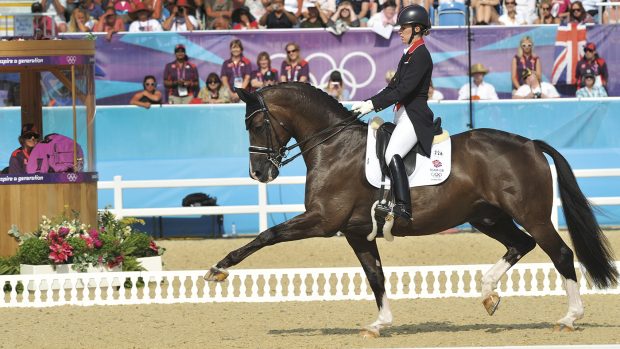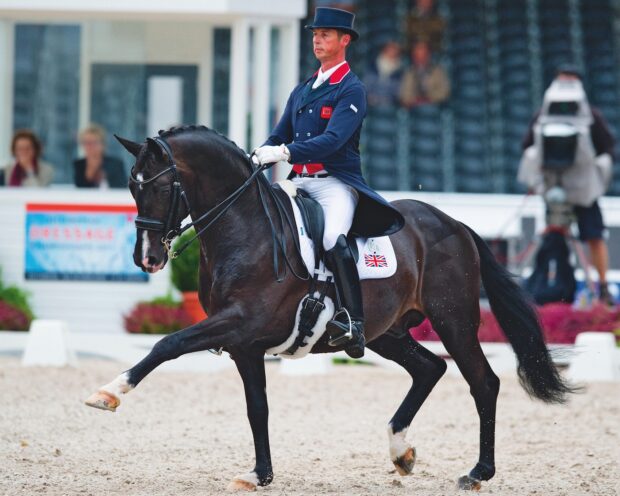I am a firm believer that feeding horses is both an art and a science. When I first started working with horses back up at home in Scotland, straights were king. The feed bins were filled with rolled oats (or naked oats if you wanted rocket fuel), bruised barley, linseed which was boiled with barley in the winter, broad bran, 24-hour soak sugar beet pellets and mollassed chop with the occasional bit of ‘mix’. To think how differently I now feed is incredible and the difference can be attributed to the explosion of the compound horse feed market.
I have no problem at all with straights, and for me, feeding this way to achieve the desired results really is an art form. Now more than ever, our compound cubes, mixes and balancers are scientifically backed and nutritionally refined, and are purchased with directives detailed on the back of the bag. No such thing on the white bags of oats. I think feeding has probably become a bit more user friendly now, but I still believe that you must have a sense and feel for managing horses to get the most from any feed, just as you need when feeding straights.
We are very fortunate to be sponsored by Saracen Horse Feeds and their range really does have the horses looking fantastic. Saracen’s senior nutritionist and associate director Lizzie Drury looks after us and is always on hand should I have any questions or conundrums for the one horse who challenges the system.
On a practical level, the science of feeding works to assess the horse’s requirements based on age, size, workload and the nutritional value of their forage and/or grazing. To me, the art of feeding is understanding that some horses will always buck the trend, and so you must consider and allow for their physical (and psychological) responses to different feedstuffs. I like to keep it all as simple as possible but also know that sometimes you have to think outside the box in your approach.

A full larder is a beautiful thing!
Our horses work pretty hard when they are in full training and so we use Saracen’s range of performance feeds which have plenty about them to keep the team fully fuelled. The feed we generally use the most of is their show improver cubes, which is a soya and wheatfeed-based product incorporating other ingredients such as linseed and rice bran. We also use enduro performance mix, which does what is says on the tin, speed mix for a low intake, high energy ration, and releve for a cereal-free mix option. Along with large quantities of show improver cubes, we use Saracen’s balancer stamm 30 for a number of our horses. I find that a balancer can work really well for horses where calories are a bit of consideration, and will often feed it on its own with some alfalfa chaff for a slightly chubby horse and/or something that is having a holiday or a rest.
We also use stamm as a base feed, topping it up with one of the performance products should we want to increase the energy potential of the meal but maintain a low or variable intake level in line with the intensity of their exercise. This approach can work well for a horse who tends to put on weight easily but needs more fuel than provided by feeding the balancer alone. In terms of complementary products, we use Kentucky Equine Research’s equijewel, which is a high-fat rice bran-based supplement which is useful for those of our horses who need additional help maintaining their condition.
Continued below…
Like this? You might also enjoy reading these:
Team Hester’s blog: ‘Assumption is the mother of all cock-ups’
Team Hester’s blog: Blueberry loves a water feature
It is true that we are in a very fortunate position to have Saracen as a sponsor, but their contribution is all the more valuable due to the quality of the feed they produce. We have access to a range of feeds that suit all of our horses in one form or another and so I have various go-to options should we need to alter something. Carl or Charlotte might say: “This one needs a bit more energy” and so I will adjust accordingly. Alternatively, Alan might feedback that a certain horse needs a change up heading into a big competition and will advise on the best ration in light of that. It sounds obvious, but feeding performance horses becomes all the more easy when you have information like this, and thus it all harps back to consideration of what horse needs and when, and observing how it responds to a certain feed. That’ll be the art bit then.
Fizz




